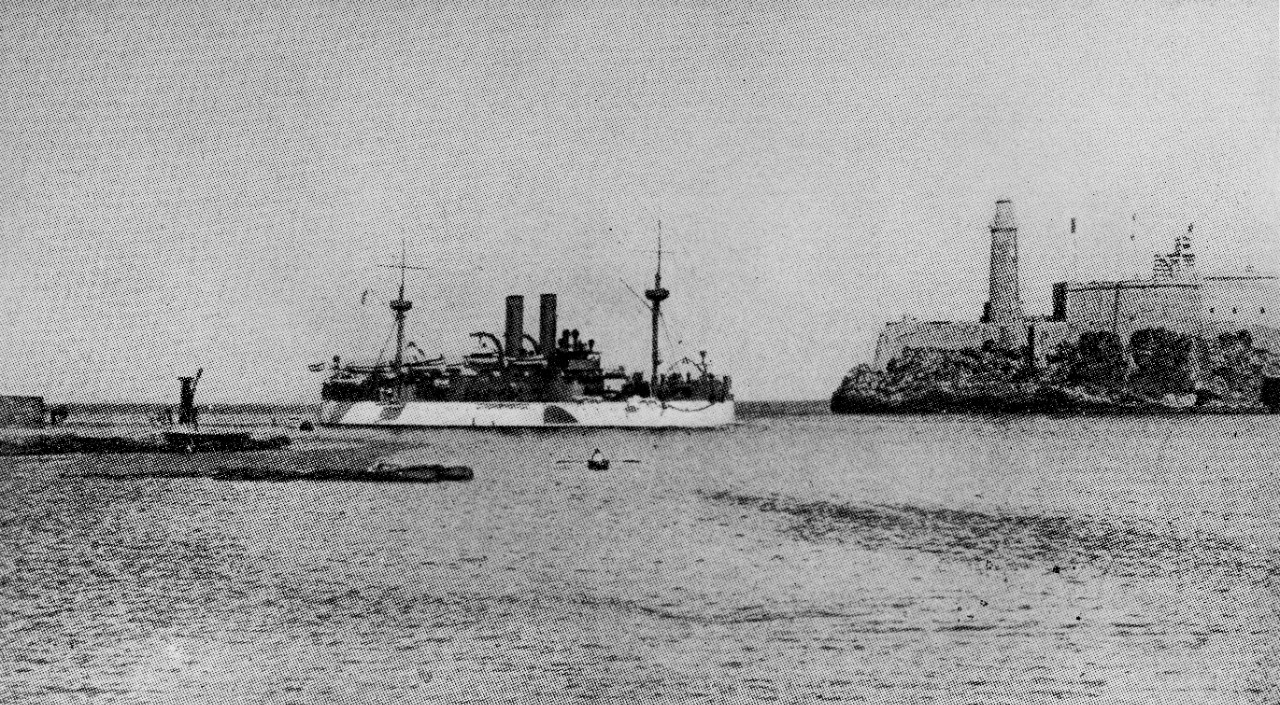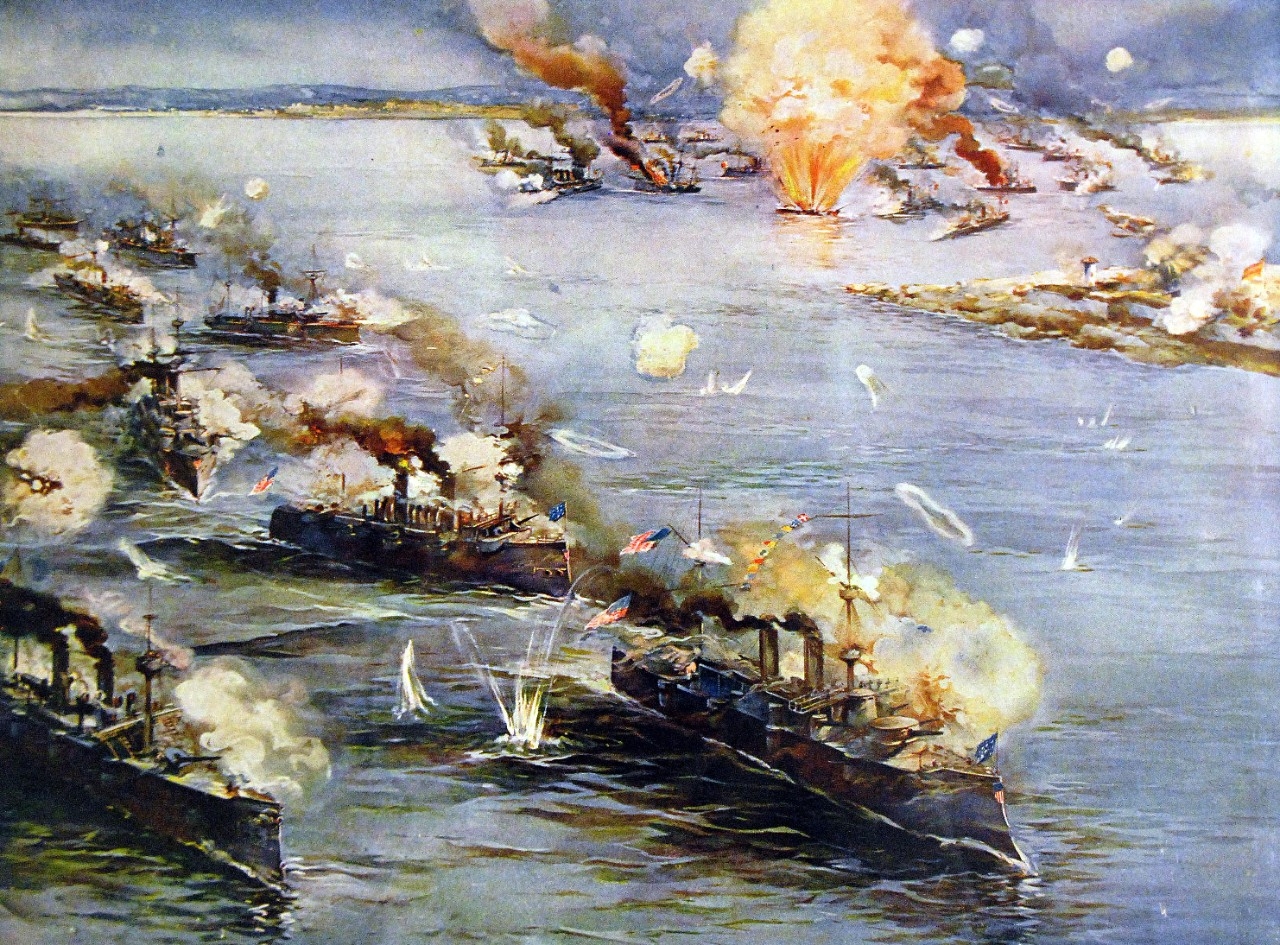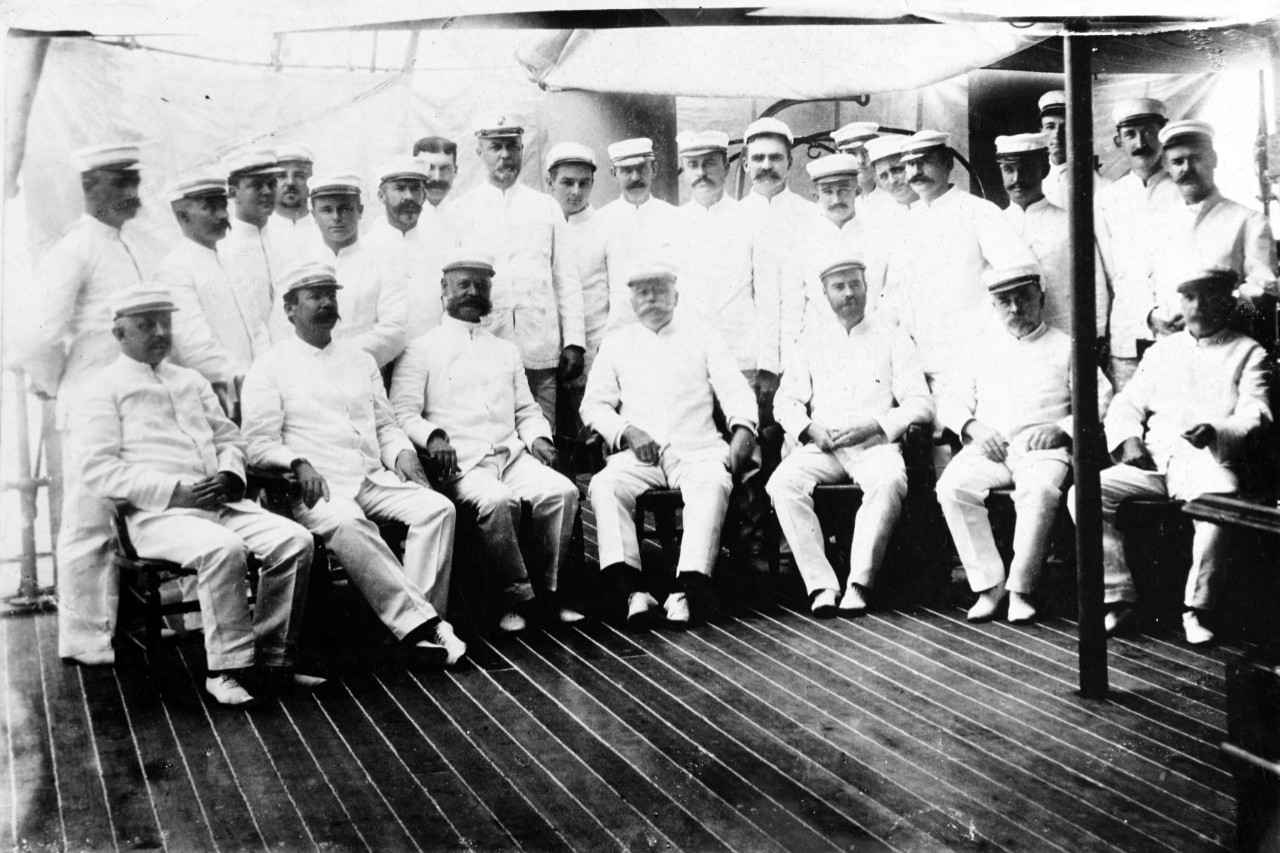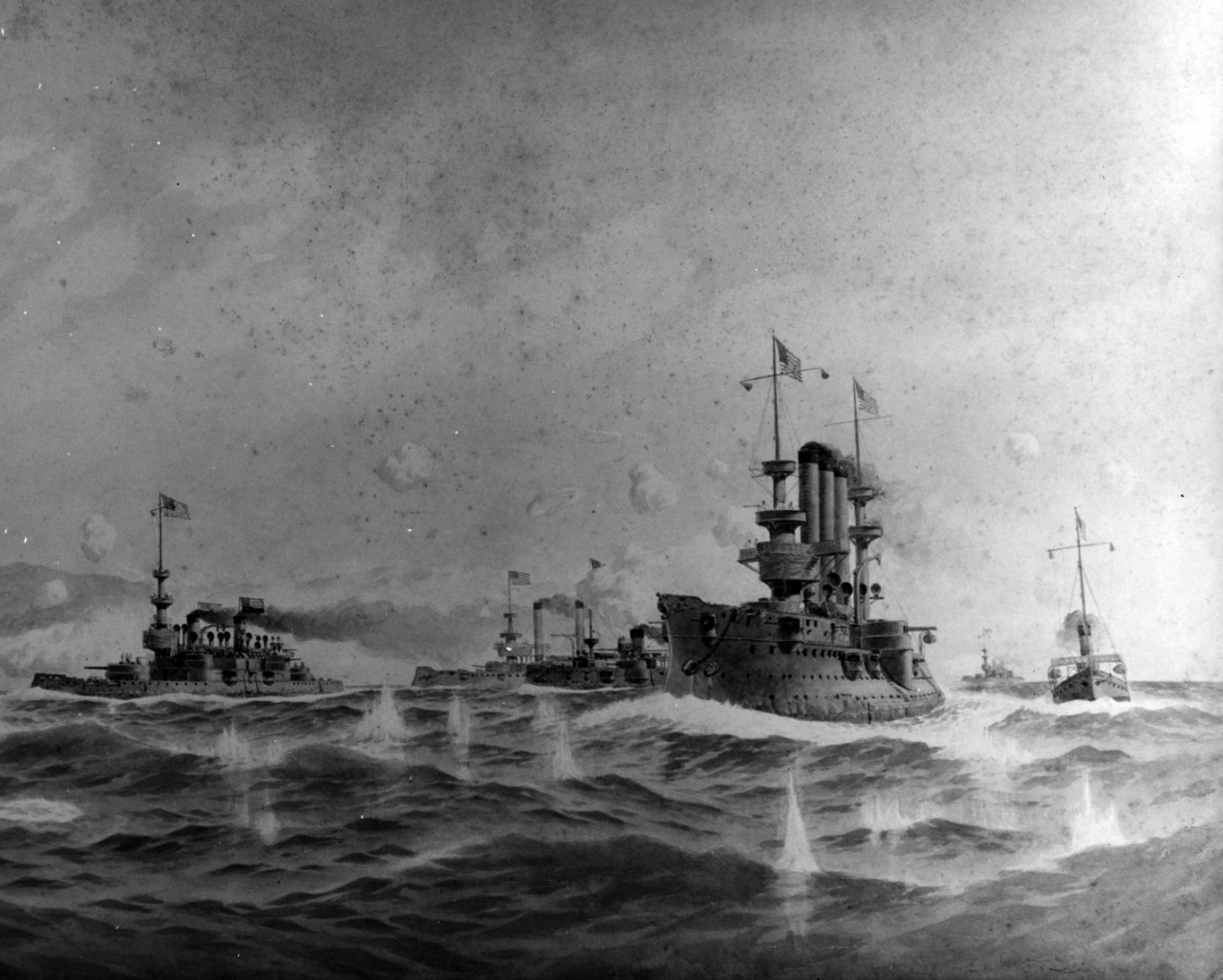Spanish-American War
1898
The Spanish-American War was preceded by three years of intense fighting by Cuban revolutionaries who sought to gain independence from Spanish colonial rule. From 1895–98, the conflict in Cuba captured the attention of the American public mostly because of the economic and political instability within close geographical proximity to the United States. The U.S. press and political establishment also had a role in stirring up American sentiment. By early 1898, tensions between the United States and Spain were mounting. After battleship Maine exploded and was sunk in the Havana harbor on 15 February 1898, U.S. military intervention in Cuba became likely. On 20 April, Congress passed a joint resolution that acknowledged Cuba’s independence, demanding that Spain give up control of the island and authorizing President William McKinley to use whatever military measures he deemed necessary to guarantee the independence of Cuba. The Spanish government saw no alternative but to rejecting U.S. demands and severing all diplomatic relations. McKinley responded by ordering a naval blockade of Cuba and issued an order for the call-up and deployment of 125,000 military personnel, termed “volunteers” at the time.
The first battle of the Spanish-American War occurred on 1 May. Opening with Commodore George Dewey's famous order, “You may fire when you are ready, Gridley,” the Navy's Asiatic Squadron defeated the Spanish squadron under the command of Spanish Admiral Patricio Montojo y Pasaron defending Manila Bay’s defense in just six hours . With cruisers Olympia, Raleigh, Boston, and Baltimore, gunboats Concord and Petrel, revenue cutter McCulloch, and with reinforcements from cruiser Charleston and monitors Monadnock and Monterey, the Asiatic Squadron forced the capitulation of Manila. During the battle, the entire Spanish squadron was sunk, which included cruisers Maria Cristina and Castilla, gunboats Don Antonio de Ulloa, Don Juan de Austria, Isla de Luzon, Isla de Cuba, Velasco, and Argos. After the Spanish squadron was destroyed, Dewey focused on silencing enemy shore batteries and awaited the arrival of land forces to capture Manila, the capital of the Philippines. By the end of July, some 11,000 U.S. troops were on the ground under the command of U.S. Army Major General Wesley Merritt, and by 13 August, Manila fell.
Painting of the Spanish-American War’s Battle of Manila Bay, 1 May 1898, with Manila, Philippines, in the top center and the Spanish fleet in the upper right. U.S. Navy ships listed descending on the left to bottom are McCullough, Petrel, Concord, Boston, Raleigh, Baltimore, and Olympia. Color lithograph by Rand McNally. Courtesy of the Library of Congress.
Meanwhile, attention centered on Cuba. On 27 May, under the command of Admiral William T. Sampson and Admiral Winfield S. Schley, the U.S. Navy successfully blockaded the port of Santiago. About two weeks later, U.S. Marines landed on Guantanamo Bay and additional forces landed near the port city of Santiago in late June. From 1–3 July, U.S. ground forces soundly defeated the Spanish army during the Battle of San Juan Heights. In an effort to escape capture after American ground forces prevailed, Admiral Pascual Cervera y Topete attempted to evade the U.S. blockade of Santiago harbor, but his squadron was demolished by the much more powerful U.S. naval forces. American ships destroyed Spanish destroyer Furor, torpedo boat Pluton, and armored cruisers Infanta Maria Teresa, Almirante Oquendo, Vizcaya, and Cristobal Colon. Ultimately, the Spanish lost all their ships and lost 350 personnel killed in action and 160 wounded.
At this point, the war was all but over due to the sheer dominance of the U.S. military’s superior naval and ground forces and because Spain was not prepared for a war with an up and coming world power. On 26 July, at the request of the Spanish government, the French ambassador in Washington, Jules Cambon, approached the McKinley administration to discuss peace terms. As a result of the talks, a cease-fire was signed on 12 August. The war officially ended four months later when the U.S. and Spanish governments signed a Treaty of Paris on 10 December 1898.
The war ended Spain’s colonial empire in the western hemisphere and also secured the position of the United States as a Pacific power. The U.S. victory compelled Spain to relinquish claims on Cuba, and to cede sovereignty over Guam, Puerto Rico, and the Philippines (the United States agreed to pay $20 million for the latter). The United States also annexed the territory of Hawaii as a result of the conflict. Consequently, the war enabled the United States to establish its predominance in the Caribbean region and to pursue strategic and economic interests in Asia. It also forged the way toward the construction of the Panama Canal, linking the Atlantic and Pacific oceans.
*****
Significant Naval Engagements and Related Events
1898
- 15 February: Battleship Maine exploded in Havana Harbor, Cuba, killing 266 American sailors.
- 28 March: Report of U.S. Naval Court of Inquiry found Maine explosion caused by a mine.
- 4 April: The New York Journal issued a million-copy press run dedicated to the war in Cuba. The newspaper called for the immediate U.S. entry into war with Spain.
- 22 April: President William McKinley ordered a blockade of Cuba and all diplomatic relations were suspended.
- 24 April: A Spanish decree declared war against the United States.
- 25 April: Congress passed a resolution declaring that a state of war had existed since 21 April.
Commodore George Dewey, commander of the U.S. Asiatic Squadron, is pictured in front middle, on board his flagship Olympia with his staff. On 1 May 1898, Dewey’s Asiatic Squadron destroyed the entire Spanish squadron during the Battle of Manila Bay. Naval History and Heritage Command photograph, NH 43347.
- 1 May: Battle of Manila Bay. Commodore George Dewey’s Asiatic Squadron destroyed the entire Spanish squadron in Manila Bay, Philippines.
- 10 May: Secretary of the Navy John D. Long issued orders to Captain Henry Glass, commander of the cruiser Charleston, to capture Guam on the way to Manila.
- 27 May: Under Admiral William Sampson and Admiral Winfield Schley, the U.S. Navy formally blockaded the port of Santiago de Cuba.
- 10 June: U.S. Marines land at Guantanamo, Cuba.
- 18 June: U.S. Secretary of the Navy John D. Long ordered Admiral William Sampson to create a new squadron, the Eastern Squadron, for possible raiding and bombardment missions along the coasts of Spain.
- 20 June: Spanish authorities surrendered Guam to Captain Henry Glass and cruiser Charleston.
- 20 June: The main U.S. force appeared off Santiago de Cuba, with more than 16,200 soldiers and various material in 42 ships. A total of 153 ships eventually assembled off of the harbor.
- 22 June: U.S. troops land at Daiquiri, Cuba.
- 1–3 July: Battle of San Juan Heights takes place.
- 3 July: The Spanish fleet attempted to escape the blockade of Santiago Bay, but was repulsed by a U.S. squadron under Admiral Winfield Schley. Schley’s squadron destroyed Spanish destroyer Furor, torpedo boat Plutón, and armored cruisers Infanta María Teresa, Almirante Oquendo, Vizcaya, and Cristóbal Colón. In all, the Spanish lost all their ships, with 350 were killed in action and 160 wounded.
- 17 July: The Spanish surrendered to the United States at Santiago.
- 12 August: The United States and Spain signed the Protocol of Peace, ending hostilities between the two countries.
- 10 December: A Treaty of Paris was signed by representatives from the U.S and Spain, formally ending the Spanish-American War.
- 23 December: Guam was placed under the control of the U.S. Department of the Navy.
- 6 February 1899: The Treaty of Paris was ratified by the U.S. Senate. Under the treaty, the U.S. acquired control of Cuba, Puerto Rico, Guam, and the Philippines.
Suggested Reading
- Spanish-American War In-Depth Documentary History
- H Gram 015-3: “Remember the Maine! To Hell with Spain!”
- H Gram 020-5: Merrimac’s Suicide Mission
- H-Gram 020-6: Victory at Santiago
- Early 20th Century Conflicts
- Revisiting the U.S. Capture of Guam during the Spanish-American War
- 1898 Report of the Secretary of the Navy
- Battle of Santiago Eyewitness Account
- Battle of Manila Bay: Selected Documents
- Battle of Manila Bay: Overview
- Ships of the Spanish-American War
- War Plans and Preparations and their Impact on U.S. Naval Operations in the Spanish-American War
Uniforms/Battle Streamer/Campaign Medals
Exhibit and Artifacts
Video Footage
The Spanish-American War in Motion Pictures. This presentation, provided by the Library of Congress, features 68 motion pictures, produced between 1898 and 1901, of the Spanish-American War and the subsequent Philippine Insurrection. The Spanish-American War was the first U.S. war in which the motion picture camera played a role. These films were made by the Edison Manufacturing Company and the American Mutoscope & Biograph Company and consist of actualities filmed in the U.S., Cuba, and the Philippines, showing troops, ships, notable figures, and parades, as well as reenactments of battles and other war-time events. This special presentation presents the motion pictures in chronological order together with brief essays that provide a historical context for their filming.






